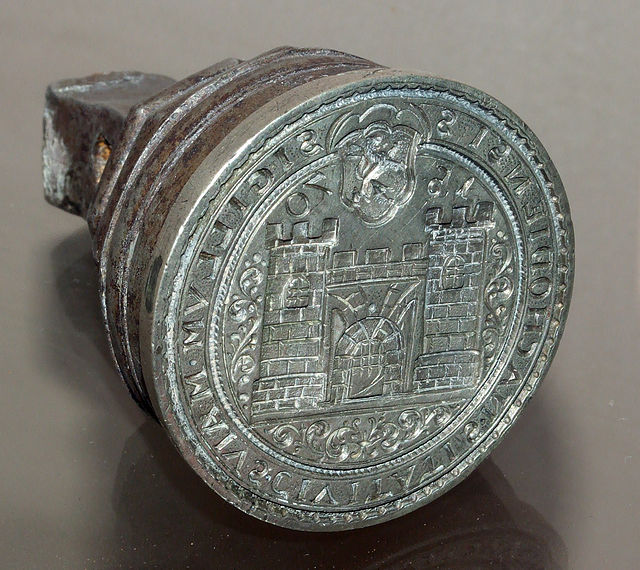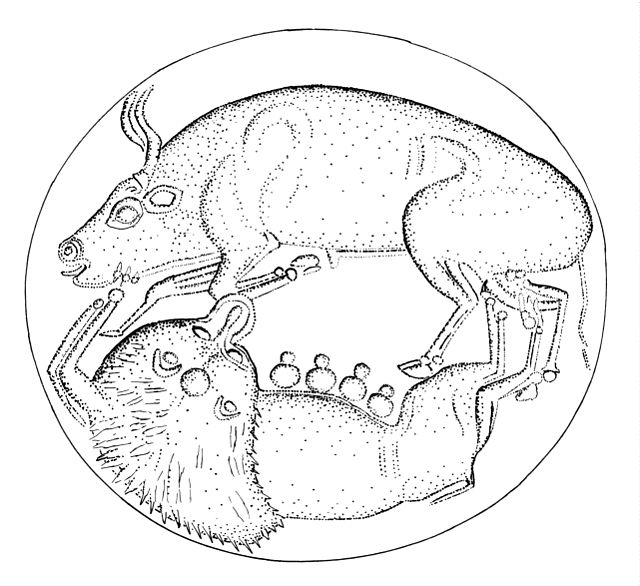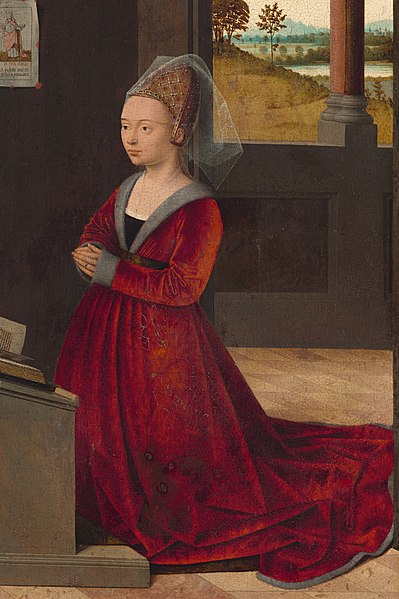A seal is a device for making an impression in wax, clay, paper, or some other medium, including an embossment on paper, and is also the impression thus made. The original purpose was to authenticate a document, or to prevent interference with a package or envelope by applying a seal which had to be broken to open the container.
Town seal (matrix) of Náchod (now in the Czech Republic) from 1570
Present-day impression of a Late Bronze Age seal
A stamp seal and its impression.
Mesopotamian limestone cylinder seal and the impression made by it—worship of Shamash
Sealing wax is a wax material of a seal which, after melting, hardens quickly, forming a bond that is difficult to break without noticeable tampering. Wax is used to verify that something such as a document is unopened, to verify the sender's identity, and as decoration. Sealing wax can also be used to take impressions of other seals. Wax was used to seal letters close and later, from about the 16th century, envelopes. Long before sealing wax was employed, the Romans used bitumen for this purpose.
Letters sealed with wax in a painting from 1675 by Cornelis Norbertus Gysbrechts
A donor portrait by Petrus Christus, c. 1455, showing a print attached to the wall with sealing wax
Wax seal displaying the Fonseca Padilla family arms
Personal seal of William Stoughton (judge) with his coat of arms, as it appears on the warrant for the execution of Bridget Bishop for witchcraft in Salem, Massachusetts in 1692








